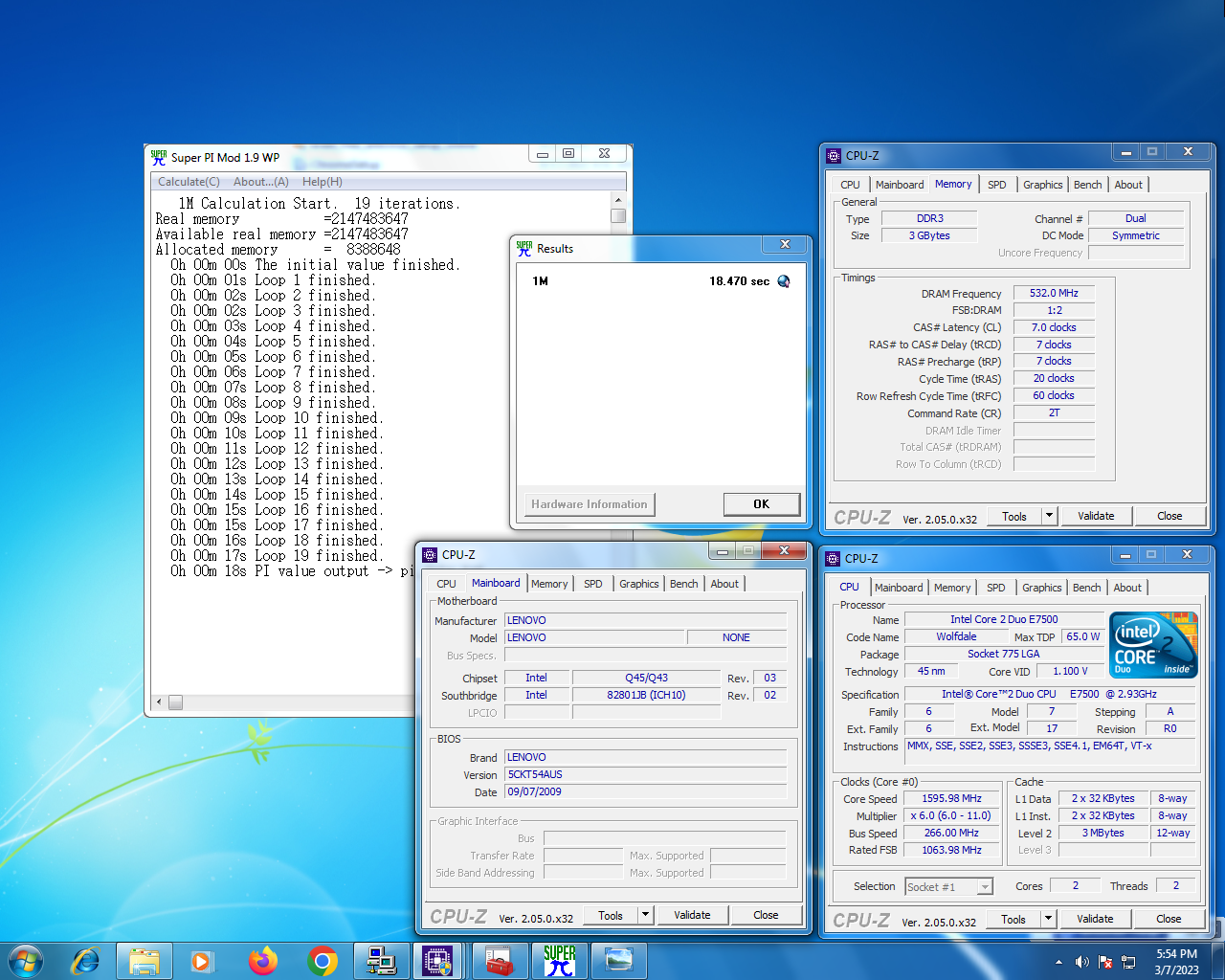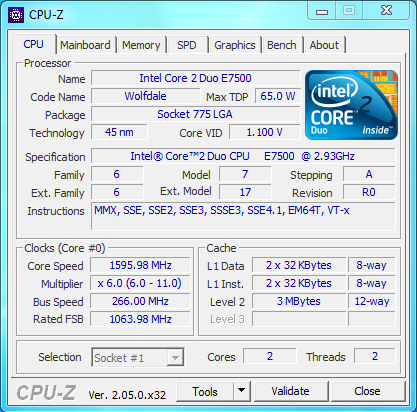SuperPi - 1M score 18sec 470ms with a Core 2 Duo E7500
Wednesday, 08 March 2023 19:15 | Update at 2 years ago
Media Gallery
Screenshot

Device, Setup, etc

URL
https://hwbot.org/submission/5220751https://www.facebook.com/hakimnu.id/posts/pfbid0BT2YkwKYMPT1wPLkfApiAQ1Nsu9484CBGmNMFBsibxJgv3dHR18siT7gCJPDENwYl
Information Detail
Hardware: Intel Core 2 Duo E7500
Specs:CPUID : Intel(R) Core(TM) 2 Duo CPU E7500 @ 2.93GHz
Architecture : x86
Codename : Wolfdale
L3 Cache : -
Clock : 2.93GHz
Core/Thread : 2/2
TDP : 65W
Technology : 45nm
Socket : LGA775
IGPU : -
See more specification...
Software: SuperPi - 1M
Score: 18sec 470ms
About: SuperPi - 1MSuperPi - 1M is one of the classic and popular benchmarks used to measure single-thread CPU performance by calculating the number π (pi) to 1 million decimal places. This benchmark has long been a favorite benchmark among tech enthusiasts, overclockers, and hardware testers due to its simplicity, speed, and accuracy in directly assessing processor performance.
In SuperPi 1M testing, only one CPU core is used to complete the calculation as quickly as possible. This makes it ideal for assessing the single-core capability of a CPU, especially in scenarios where single-core performance remains highly relevant, such as in lightweight applications, gaming, or everyday use.
Despite its simplicity, SuperPi 1M is highly sensitive to clock speed, memory latency, and processor architecture efficiency. As a result, this benchmark is often used as a standard in overclocking competitions, as even small differences in system configuration can lead to significantly different execution times.
Features and Advantages:
- Calculates 1 million digits of the number π (pi) with precision.
- Emphasizes the single-thread performance of the processor.
- Runs quickly, ideal for repeated testing.
- Suitable for comparing CPU architecture efficiency.
- Still widely used in the global overclocking community.
Despite the availability of many modern benchmarks, SuperPi 1M remains a significant tool in CPU testing due to its direct representation of basic computational performance. This benchmark is also lightweight and compatible with nearly all Windows versions, making it a practical tool for quick system evaluation.
The Intel Core 2 Duo E7500 is a desktop processor released in 2009, based on the Wolfdale architecture, which is part of Intel’s Core 2 Duo family. It features 2 cores and 2 threads, running at a clock speed of 2.93 GHz, and operates with a 1066 MHz Front Side Bus (FSB).
Manufactured using 45nm process technology, the E7500 has a TDP of 65W, which was considered energy-efficient for its time. However, this processor does not support Hyper-Threading or Turbo Boost, meaning its performance is limited to strictly single-threaded and basic dual-threaded applications.
In terms of modern computing standards, the Core 2 Duo E7500 is outdated and performs well below current entry-level processors. Despite this, it can still be useful in legacy systems for light workloads such as basic web browsing, office documents, and 480p–720p video playback, especially when paired with a lightweight operating system.
* Not Avaiable
